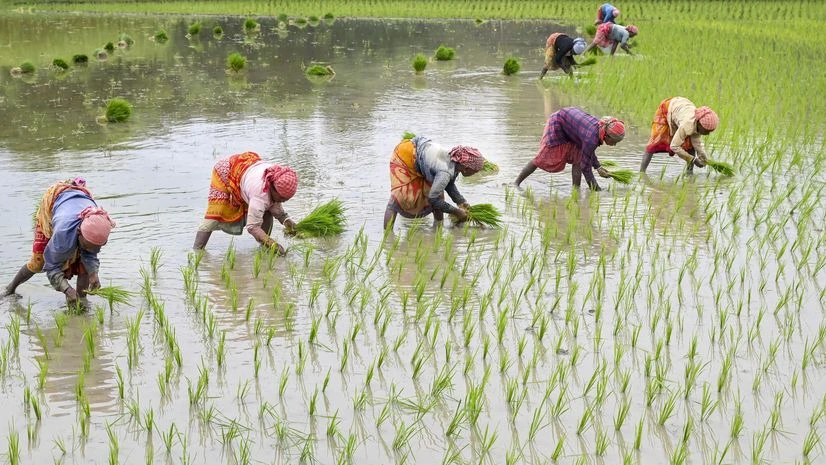)
Nadia: Farm workers plant paddy saplings at a field during monsoon, in Nadia, Friday, Aug. 2, 2024. (Photo: PTI)
Kharif crops, such as paddy and maize, were sown in a larger area till the week ended August 9, 2024, compared to the same period last year in a positive sign for policymakers and central bankers looking to tame food inflation.
Compared to previous weeks, the pace of sowing declined owing to the southwest monsoon, which continued to impact several parts of India, and as sowing neared its end in most parts of the country across major kharif crops. The kharif season begins in June.
Data showed that till August 9, kharif crops had been sown in around 98 million hectares, 1.39 per cent more compared to the same period last year.
A good kharif harvest will go a long way in cooling food inflation by increasing supply of staples such as rice. It will also ensure adequate soil moisture for a healthy rabi harvest.
The acreage under arhar, or tur, was almost 16 per cent more than last year and a continued pace of sowing may see it cover more than the normal area of 4.55 million hectares.
Normal area is the average area covered under a crop in the last five seasons.
Maize and groundnut were the other two crops that logged the highest gain in area sown compared to the same period last year.
Cotton, meanwhile, has seen a fall in acreage with industry experts contending that farmers were shifting almost 10-12 per cent of the area under cotton to other crops due to declining returns.
The strong monsoon so far has also ensured that water levels in reservoirs across most parts of the country, except North India, were higher than their normal storage levels.
Monsoon till August 12, 2024 was 6 per cent more than normal, with southern India leading with 22 per cent above average rainfall.
First Published: Aug 12 2024 | 9:32 PM IST


































